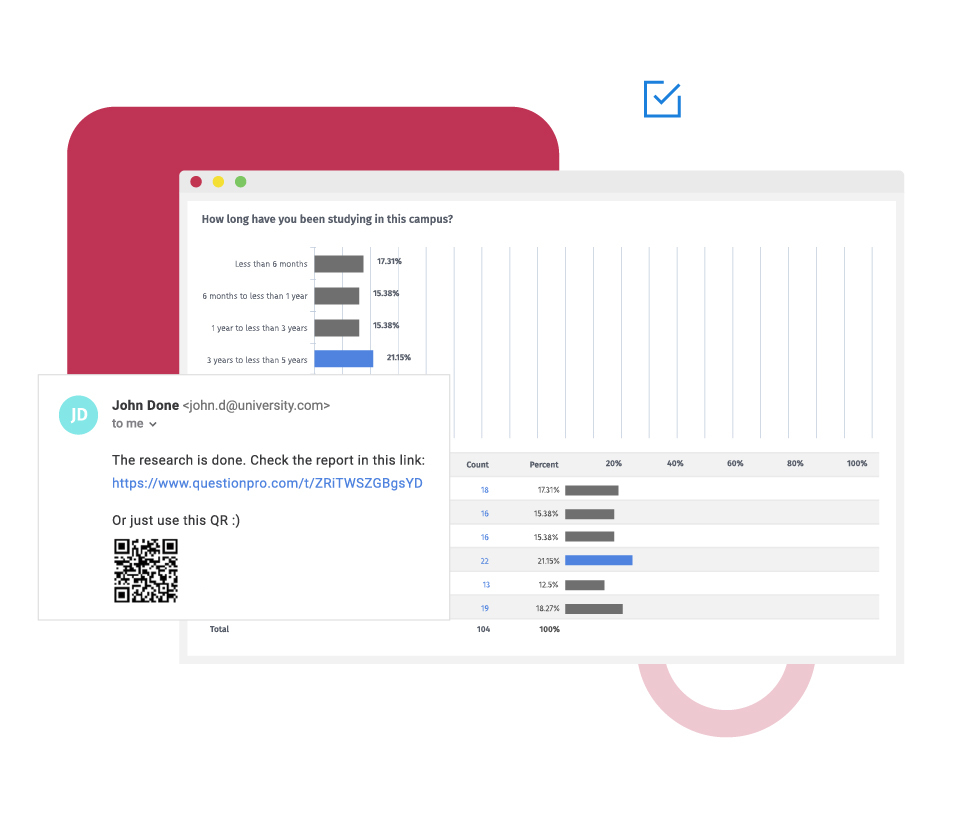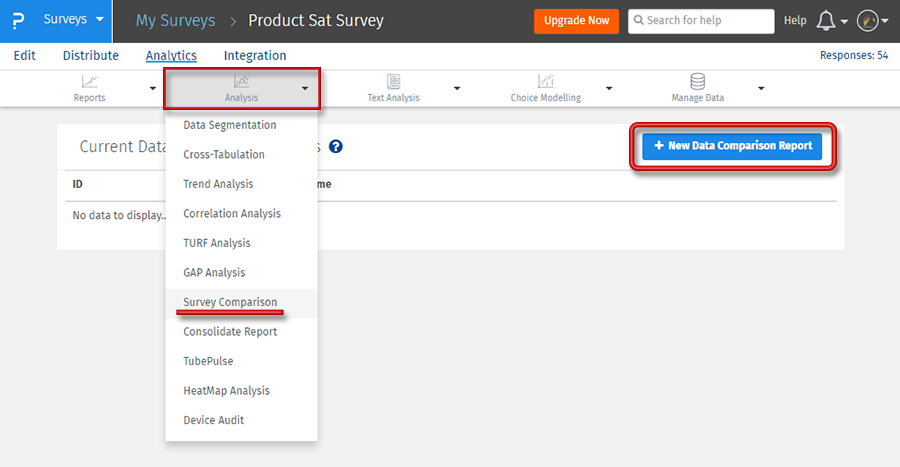With this option, you can also compare different questions from different surveys to suit your research needs.
Example of survey comparison in surveys
A product company that does customer experience surveys can use this option to understand what customers feel about their product after new features and developments are added. Questions that inquire about customers' experiences, user-friendliness of the tools, efficiency, speed, etc., can be compared across two distinct surveys. One before the feature additions and one after developments were made and incorporated into. This will help them understand how effective, efficient, and well-received these additions were. The survey comparison option can come in handy to check performance-related questions when managers change their teams, restaurants undergo management changes, etc.

Uses of survey comparison
Survey comparisons come in handy to understand how your respondents' perspectives have changed for some aspects over time. This helps in making changes to your processes, operations, products, or services. Rather than comparing entire surveys, you can exercise this option to compare questions or aspects that are most important to your research.
Advantages of creating surveys with survey comparison
No need to compare surveys: Using this option, you do not have to compare entire surveys. You can simply compare the survey questions or results that are relevant to you.
Look at trends over time: Comparing survey questions or responses can help uncover and monitor trends over time. Studying these trends can give you insights into aspects necessary to improve your customer programs, business processes, etc.
Save time: Not having to compare surveys and just questions or responses that are relevant to you saves a lot of time and effort for your administrators, managers, and researchers.
How to use survey comparison in surveys?
To use survey comparison in surveys, read our help files on how to set up survey comparison.
Survey Software Easy to use and accessible for everyone. Design, send and analyze online surveys.
Research Suite A suite of enterprise-grade research tools for market research professionals.
Customer Experience Experiences change the world. Deliver the best with our CX management software.
Employee Experience Create the best employee experience and act on real-time data from end to end.






